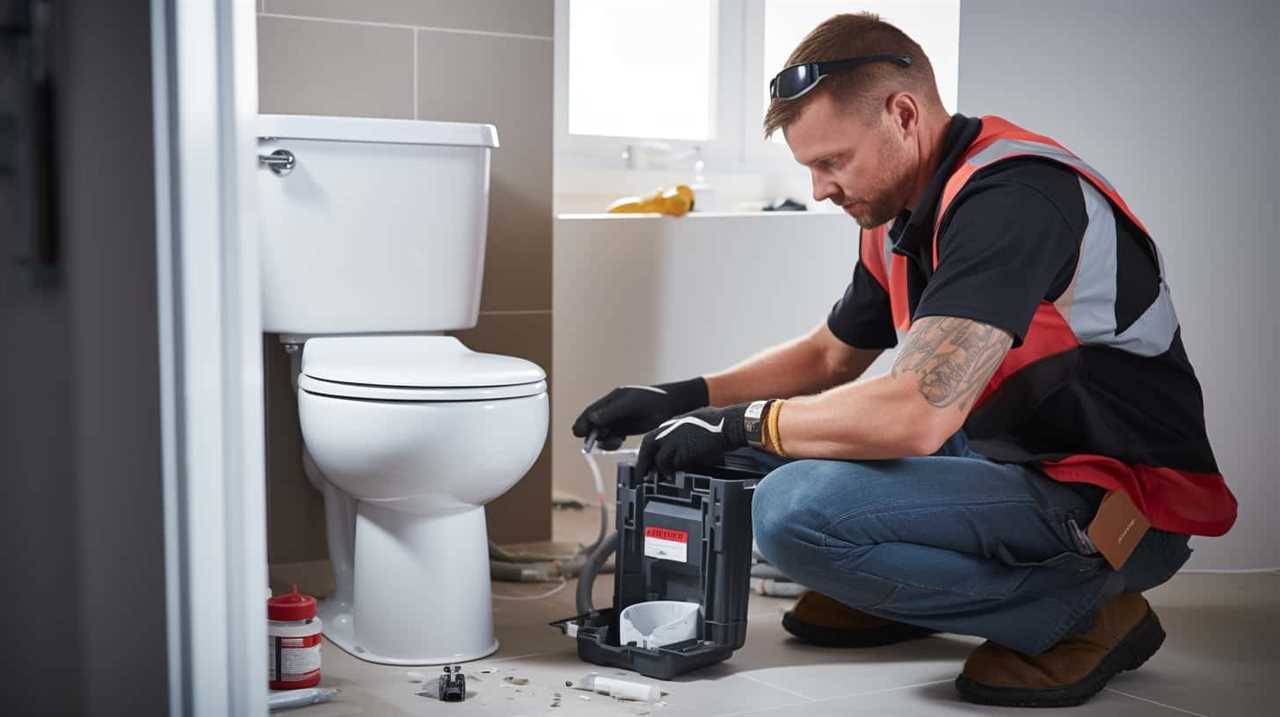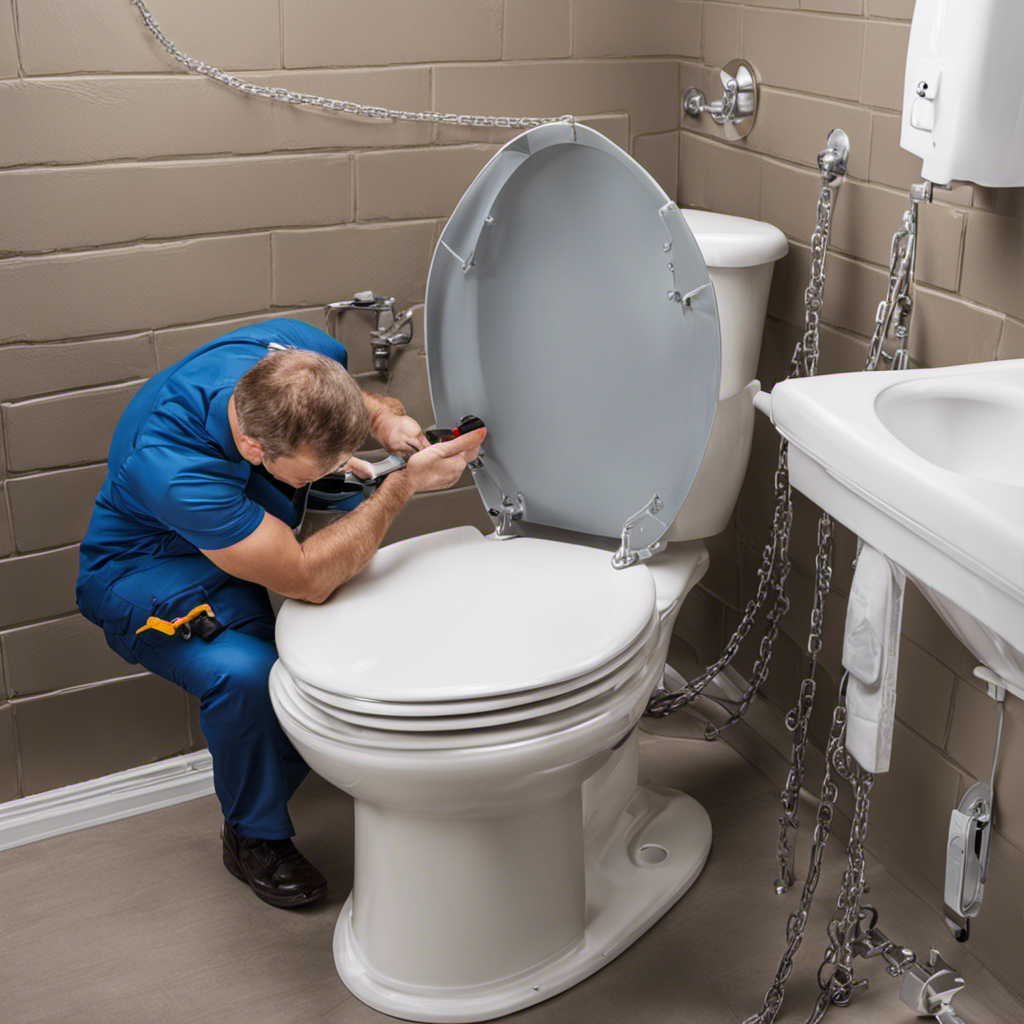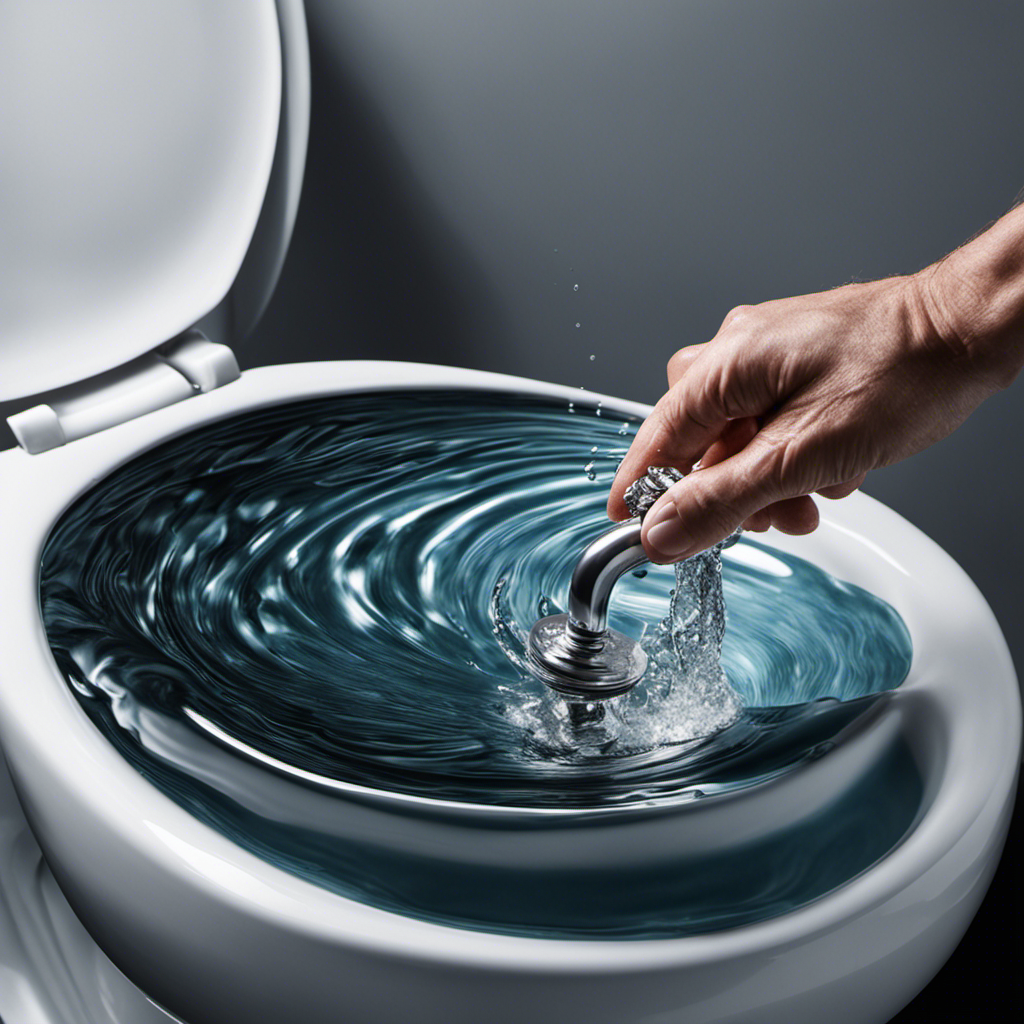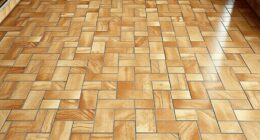Have you ever wondered what happens when something small gets flushed down the toilet? Well, let us take you on a journey through the plumbing system to explore the potential damage and repairs caused by these flushed objects.
From clogs to costly repairs, we will uncover the truth behind this common problem.
But fear not, for we also have tips to help you prevent small objects from being flushed in the first place.
So, join us as we dive into the world of flushed objects and discover the secrets they hold.

Key Takeaways
- Flushing small objects can cause blockages, pipe damage, and sewage backups, leading to costly repairs and potential health risks.
- Proper education and preventative measures, such as keeping the bathroom door closed, supervising children, and installing toilet lid locks, can help prevent small objects from being flushed.
- Immediate action and professional assistance from a plumber are essential if a small object is flushed to prevent further complications and damage to the plumbing system.
- Flushed objects can have environmental impacts, including clogged pipes, sewage backups, and contamination of water sources, emphasizing the importance of proper waste disposal and management.
Common Small Objects That End up in Toilets
In our experience, we’ve found that there are several common small objects that often end up in toilets. These objects include but aren’t limited to toys, jewelry, sanitary products, and even small electronic devices. Many times, these items accidentally fall into the toilet bowl or are mistakenly flushed down.
While it may seem harmless, flushing these small objects can have harmful effects on your plumbing system. For instance, toys and jewelry can get stuck in the pipes, leading to blockages and clogs. Sanitary products can cause similar issues, as they aren’t designed to break down easily. Additionally, small electronic devices can malfunction and potentially cause damage to the toilet’s mechanisms.
Understanding the common small objects that end up in toilets is crucial in preventing potential plumbing problems. Now, let’s explore how these small objects can cause clogs.
How Small Objects Can Cause Clogs
When small objects are flushed down the toilet, they can easily cause clogs in the plumbing system. The impact of flushed objects on plumbing systems can be significant, leading to costly repairs and inconvenience. Here are three common causes of toilet clogs:

- Non-biodegradable materials: Items such as wipes, dental floss, or sanitary products don’t break down easily in water. They can accumulate in the pipes, reducing the flow and eventually causing a blockage.
- Excessive toilet paper usage: Using an excessive amount of toilet paper in a single flush can overwhelm the plumbing system. The paper can ball up and accumulate, causing a blockage.
- Foreign objects: Children are notorious for flushing toys, small gadgets, or even keys down the toilet. These objects can get stuck in the pipes, obstructing the flow of water and causing clogs.
To prevent these issues, it’s important to educate people about proper toilet usage and to avoid flushing anything besides toilet paper and human waste.
The Journey of a Flushed Object Through the Plumbing System
A flushed object undergoes a series of stages as it navigates through the plumbing system. When an object is flushed down the toilet, it enters the sewer system where it’s carried away by the force of the water flow.
The object then travels through a network of pipes, encountering bends and junctions along the way. It’s important to note that flushing objects can have significant environmental impacts. Non-biodegradable items, such as plastics, can accumulate in wastewater treatment plants and contribute to pollution.
In some cases, unusual objects have been found in plumbing systems, leading to costly repairs. For instance, items like dental floss, cotton swabs, and even small toys have been discovered causing blockages and damage.

Ultimately, the journey of a flushed object highlights the potential risks and consequences that can arise from improper disposal.
Potential Damage and Repairs Caused by Flushed Objects
As we continue the discussion from the previous subtopic, it’s important to address the potential damage and repairs that can be caused by flushed objects in the plumbing system. Flushed objects can lead to serious consequences, including potential health risks and extensive damage to the plumbing infrastructure.
Here are three key points to consider:
- Blockages: Small objects can cause blockages in the pipes, leading to clogs and backups. This can result in water damage to your property and the need for costly repairs.
- Pipe Damage: Flushed objects can cause damage to the pipes themselves. Sharp or heavy objects can puncture or crack the pipes, resulting in leaks or even complete pipe failure.
- Sewage Backup: If the flushed object causes a blockage in the sewer line, it can lead to sewage backup into your home or yard. This not only creates a foul odor and unsanitary conditions but also poses potential health risks.
Immediate action is crucial to prevent further damage and mitigate potential health risks.

In the next section, we’ll discuss tips for preventing small objects from being flushed, which can help avoid these potential damages and repairs caused by flushed objects.
Tips for Preventing Small Objects From Being Flushed
To prevent small objects from being flushed, we should take proactive measures. One tip is to keep the bathroom door closed and locked when not in use, especially if there are small children in the house.
Additionally, it’s important to educate children about the dangers of flushing small objects and to supervise them while they’re in the bathroom. Another helpful tip is to install toilet lid locks, which can prevent children from lifting the lid and accessing the toilet bowl.
In case a small object does get flushed, it’s crucial to avoid using the toilet and immediately call a professional plumber for assistance. This is important because attempting to retrieve the object using tools or other methods can cause further damage to the plumbing system.

It’s also important to note that flushed objects can have a significant impact on the environment, as they can contribute to clogged pipes and sewage backups. Therefore, it’s crucial to take preventative measures to avoid these issues.
Frequently Asked Questions
Can a Flushed Small Object Cause Damage to the Sewage System Outside of My Home?
If a small object gets flushed down the toilet, it can cause damage to the sewage system outside of our home. To prevent clogs from small objects, we should avoid flushing them and dispose of them properly.
Are There Any Small Objects That Are More Likely to Cause Clogs Than Others?
The most common small objects that are flushed down toilets include toys, jewelry, and hygiene products. Flushing these objects can lead to clogs in the plumbing system and potential damage to the sewage system outside of our home.
Can a Small Object Flushed Down the Toilet Eventually Dissolve or Break Apart?
A small object flushed down the toilet may not dissolve or break apart completely. The breakdown process depends on the material and water conditions. However, there are potential risks such as clogs and damage to plumbing systems.

How Long Does It Typically Take for a Flushed Small Object to Travel Through the Plumbing System?
On average, the travel time for a flushed small object in plumbing systems can vary depending on factors such as the object’s size and shape, water pressure, and the condition of the pipes.
What Should I Do if a Small Object Gets Flushed Down the Toilet and Causes a Clog?
If a small object gets stuck in the toilet drain, there are steps we can take to resolve the issue. First, we should avoid flushing small objects to prevent clogs. If a clog occurs, we can try using a plunger or calling a professional plumber.
Conclusion
In conclusion, while it may seem harmless to flush small objects down the toilet, the consequences can be significant.
Not only can these objects cause clogs and blockages in the plumbing system, but they can also lead to potential damage and costly repairs.

To avoid these issues, it’s important to remember to only flush toilet paper and waste.
Let’s keep our toilets running smoothly and prevent unnecessary headaches.










